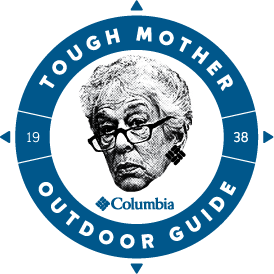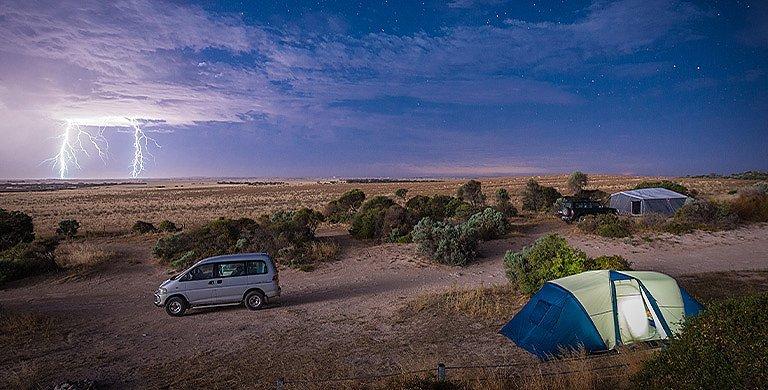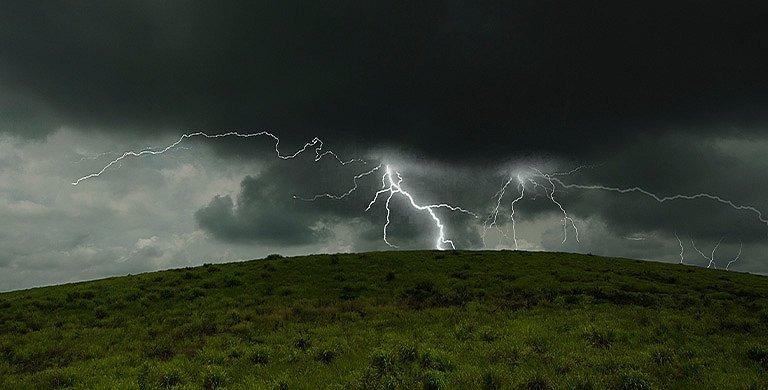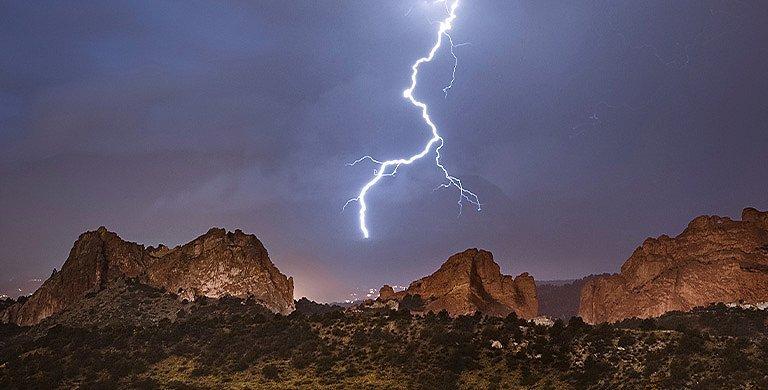EXPLORATION
Tips for Visiting National Parks
Visiting a National Park This Summer?
Here’s how to enhance your trip.
BY: NANCY BOUCHARD
If there’s one thing you can depend on in this ever-changing world, it’s National Parks. These impressive swaths of land, with their jaw-dropping scenery, awe-inspiring geology, well-preserved historic sites, and delicate ecosystems have been a part of our heritage since 1870. The US boasts 429 national parks (only 63 actually have National Park in their moniker).
These national treasures provide not only spectacular vistas and chances to learn about our cultural heritage, but also unparalleled recreational opportunities. Whether you’re a parent with a young family, a retiree, solo, on a friend trip or a college kid looking for adventure, national parks are your opportunity to explore wilderness, learn about geology, history and culture, and just plain have a good time.
However, some of the most popular parks (generally the ones you can name without having to think twice) face challenges with seasonal overcrowding, staffing shortages, on-going road work and maintenance, and, sadly, less than exemplary behavior by a few bad apples. In high season (aka summer months), you run the risk of long wait lines for entry, crowded viewpoints, and packed shuttle buses. Last year, more than 325 million people visited national parks. Here are some tips on how to beat the crowds and get the most out of your next adventure, whether you’re visiting a park for a quick day tour or embarking on the all-American road trip.
Dave Barak, Public Affairs Specialist with the National Park Service reports that the NPS encourages everyone to visit their national parks and enjoy unlimited opportunities for inspiration, recreation, education and fun. “We continue to seek new ways to provide the best experiences possible,” says Barak. “However, it is important to plan ahead ahead for a park visit and always keep safety in mind, whether going on a once-in-a-lifetime destination vacation or simply spending an afternoon in a close-to-home national park. Visitors are encouraged to plan like a park ranger and to recreate responsibly.” Here are some of Dave’s tips for your next visit.
These national treasures provide not only spectacular vistas and chances to learn about our cultural heritage, but also unparalleled recreational opportunities. Whether you’re a parent with a young family, a retiree, solo, on a friend trip or a college kid looking for adventure, national parks are your opportunity to explore wilderness, learn about geology, history and culture, and just plain have a good time.
However, some of the most popular parks (generally the ones you can name without having to think twice) face challenges with seasonal overcrowding, staffing shortages, on-going road work and maintenance, and, sadly, less than exemplary behavior by a few bad apples. In high season (aka summer months), you run the risk of long wait lines for entry, crowded viewpoints, and packed shuttle buses. Last year, more than 325 million people visited national parks. Here are some tips on how to beat the crowds and get the most out of your next adventure, whether you’re visiting a park for a quick day tour or embarking on the all-American road trip.
Dave Barak, Public Affairs Specialist with the National Park Service reports that the NPS encourages everyone to visit their national parks and enjoy unlimited opportunities for inspiration, recreation, education and fun. “We continue to seek new ways to provide the best experiences possible,” says Barak. “However, it is important to plan ahead ahead for a park visit and always keep safety in mind, whether going on a once-in-a-lifetime destination vacation or simply spending an afternoon in a close-to-home national park. Visitors are encouraged to plan like a park ranger and to recreate responsibly.” Here are some of Dave’s tips for your next visit.
- Know before you go: Check the status of the place you want to visit for closures, fire restrictions, and weather.
- Plan and prepare: Reservations and permits may be required. Make sure you have the gear you need and a back-up plan.
- Build an inclusive outdoors: Be an active part of making the outdoors safe and welcoming for all identities and abilities.
- Respect others: There is space for everyone and countless outdoor activities. Be kind to all who use the outdoors and nature differently.
- Leave no trace: Respect the land, water, wildlife, and Native communities. Follow the seven Leave No Trace principles.
- Make it better: We all have a responsibility to sustain the places we love.
Go Online
There are some great digital tools such as NPS.gov or the official NPS app that are designed to help you plan a park trip. These sites contain detailed information about each of our 429 national parks, including what to see and do, sample itineraries, and updates on any impacts related to weather or construction activities.
You’ll find tips on visiting parks in shoulder seasons and discovering some of the lesser-known parks. You can also find information on national seashores, recreation areas, monuments, and historic sites.
You’ll find tips on visiting parks in shoulder seasons and discovering some of the lesser-known parks. You can also find information on national seashores, recreation areas, monuments, and historic sites.
When to visit
There are many factors in deciding the best time of day or time of year to visit a particular national park. Operating hours vary from park to park, season to season. Not all parks are open year-round, so it’s important operating hours and reservation requirements. You can drive through most of the big national parks year-round, but you may not find restaurants or hotels that are open. Off-season visits are some of our favorites: autumn is an ideal time in Yellowstone to see bison, foxes, eagles and wolves. Winter in Yosemite is sublime. Big Bend National Park is fantastic in the winter months. The rule of thumb is that weekends are always the busiest. If you can visit mid-week, you’ll be ahead of the crowds.
Cost
The good news is that only about 100 of our country’s 429 national parks charge an entry fee. The bigger national parks generally charge $25-$35 a carload. And, there are several days a year when entrance fees are waived
The Era of Timed Entry and Reservations
According to the NPS, over the past decade, many parks have seen big increases in visits, especially in “popular” areas and during high season. The NPS wants to provide “safe and meaningful” visitor experiences, as well as the protection of natural and cultural resources. The thought is that crowded destinations, congested trails and roadways, full parking lots, and long lines prevent visitors from experiencing and enjoying national parks to their fullest.
One tool the NPS has implemented to reduce congestion and crowding, improve entrance and parking predictability, cut down on long lines, and spread visitation to different areas, times, days, or seasons is through reservations and timed entry systems. Most timed entry systems give you a window of a half hour or 90 minutes to enter the park. There is generally no exit time mandated. The following parks have some form of timed entry (keep in mind that many times these barriers to entry are just for a specific portion of the park, a single roadway, or a particularly popular entry station). If you are not into planning, read the online information carefully. You may be able to enter before or after the restricted time periods. And there is generally a last-minute “entry lottery” that makes passes available on a daily basis. If you book a hotel, campsite, yurt, or commercial tour operated within the park, you’re generally exempt from timed entry regulations.
Acadia National Park, Maine: Timed-entry vehicle reservations are required from May 24 through October 22 for the Cadillac Summit Road. The road is a 3-mile scenic drive to the top of the highest peak in the park with panoramic views of the coast and surrounding islands.
Arches National Park, Utah: From April 1 through Oct. 31, visitors need a timed entry ticket.
Glacier National Park, Montana: From May 24 through Sept. 8, day-use visitors need a per-vehicle reservation to access sections of the park.
Haleakalā National Park, Hawai’i: To greet the sunrise on Maui’s highest peak, visitors arriving by car will need a reservation between 3 a.m. and 7 a.m.
Mount Rainier National Park, Washington: In 2024, Mount Rainier National Park is implementing a pilot timed entry reservation system for two corridors in the park.
Muir Woods National Monument, California: A year-round reservation system is in place for cars and shuttle passengers.
Rocky Mountain National Park, Colorado: The park has a timed entry reservation system in place for visits between May 24 through Oct. 20.
Shenandoah National Park, Virginia: Visitors to Old Rag Mountain must obtain a day-use ticket for visits between March 1 and Nov. 30.
Yosemite National Park, California: A reservation is required for driving into or through Yosemite National Park between 5 am and 4 pm on various days from Feb. 10-Oct. 27.
Zion National Park, Utah: No one needs a reservation to enter the park or to ride the park shuttle. Hikers headed to Angels Landing, the dramatic 1,488-foot-tall rock formation, need a permit. The program applies only to hikes at Angels Landing.
Acadia National Park, Maine: Timed-entry vehicle reservations are required from May 24 through October 22 for the Cadillac Summit Road. The road is a 3-mile scenic drive to the top of the highest peak in the park with panoramic views of the coast and surrounding islands.
Arches National Park, Utah: From April 1 through Oct. 31, visitors need a timed entry ticket.
Glacier National Park, Montana: From May 24 through Sept. 8, day-use visitors need a per-vehicle reservation to access sections of the park.
Haleakalā National Park, Hawai’i: To greet the sunrise on Maui’s highest peak, visitors arriving by car will need a reservation between 3 a.m. and 7 a.m.
Mount Rainier National Park, Washington: In 2024, Mount Rainier National Park is implementing a pilot timed entry reservation system for two corridors in the park.
Muir Woods National Monument, California: A year-round reservation system is in place for cars and shuttle passengers.
Rocky Mountain National Park, Colorado: The park has a timed entry reservation system in place for visits between May 24 through Oct. 20.
Shenandoah National Park, Virginia: Visitors to Old Rag Mountain must obtain a day-use ticket for visits between March 1 and Nov. 30.
Yosemite National Park, California: A reservation is required for driving into or through Yosemite National Park between 5 am and 4 pm on various days from Feb. 10-Oct. 27.
Zion National Park, Utah: No one needs a reservation to enter the park or to ride the park shuttle. Hikers headed to Angels Landing, the dramatic 1,488-foot-tall rock formation, need a permit. The program applies only to hikes at Angels Landing.
Anyone can hike to Scout Lookout (1000 feet above Zion Canyon and 0.5 MI from Angels Landing) without a permit.
Places with space limitations (think caves, historic sites and smaller historic structures) also have reservation systems. For example, a summer visit to Ford’s Theatre and the Washington Monument in Washington, DC and Independence Hall in Pennsylvania might require some advance scheduling. Many national parks also have transportation systems that may require reservations, especially if there is a ferry, train, or shuttle involved; check park websites on NPS.gov for details. If you like talking to a person rather than doing online reservations, you can generally make a reservation by phone.
Places with space limitations (think caves, historic sites and smaller historic structures) also have reservation systems. For example, a summer visit to Ford’s Theatre and the Washington Monument in Washington, DC and Independence Hall in Pennsylvania might require some advance scheduling. Many national parks also have transportation systems that may require reservations, especially if there is a ferry, train, or shuttle involved; check park websites on NPS.gov for details. If you like talking to a person rather than doing online reservations, you can generally make a reservation by phone.
Expand your vision
There are parks in every state, including the Virgin Islands, American Samoa, Guam and Puerto Rico. You have more than 84 million acres to explore, so don’t limit your ambition. It is true that June, July and August are the busiest months for many national parks, but that doesn’t mean you can’t find something spectacular, educational, or just plain fun that is a less-crowded option. Don’t forget, in addition to national parks, there are national forests, monuments, battlefields and wildlife refuges.
Entry fees
If you are visiting a “National Park” expect to pay from $25 to $35 a car for entry. If you are staying overnight in the park, your pass covers your visit. You can also get a voucher that lets you leave the park and return (nice if you are staying out of the park). There’s a free, lifetime Access Pass available for US citizens and permanent residents with a permanent disability.
Look at Webcams
Check out park webcams
before your visit so that you get an idea of where to expect crowds. Study the entry points; many of the parks have specific entry points where there is timed entry, but other, less popular ones are open, or less crowded than others. For example, the North Rim of the Grand Canyon (30 miles south of Jacob Lake) is historically less crowded than the South Rim (accessed from Flagstaff or Williams, AZ). While the South Rim is better known, the North Rim has a very cool lodge (Grand Canyon Lodge), sports great food, splendid views, and incredible trails. For Yosemite, Hetch Hetchy Entrance, on the northwest corner, is the best “backdoor” option.
Be Ready to Explore
By far, the vast majority of visitors to our national parks stick to the roads and viewpoint pull-outs. The truth is, if you are willing to explore (drive down some dirt roads, walk past the paved trails to dirt ones, and venture off the beaten path, you’ll have an entirely different experience than people who are tied to their cars (and cell phones). Crowding is the most intense at scenic viewpoints and within a quarter mile of the major parking lots. In bigger parks, if you walk a hundred yards away from the main roads and tourist sites, you’ll escape the crowds. Try walking a few miles (or go for a trail run); you’ll see parts of the park that are still virtually untouched. Yellowstone National Park alone boasts around 500 miles of roads, 1,000 miles of trail, and hundreds of campsites.
If you are heading into the backcountry and wilderness, you’ll need to get a trailhead and/or overnight permit. Not only does the permit system help to preserve solitude in the backcountry, but they’ll know where to look for you if you get into trouble.
If you are heading into the backcountry and wilderness, you’ll need to get a trailhead and/or overnight permit. Not only does the permit system help to preserve solitude in the backcountry, but they’ll know where to look for you if you get into trouble.
Volunteer
To really get to know a national park, volunteering is a great option. Most parks offer volunteer opportunities, from single-day events (removal of invasive plants, cleanups, art-in-the-park programs) to months-long activities where you help with archeology, interpretive talks, and tours. Many parks have special events you can sign up for, or longer-term commitments. Find a list of available opportunities at Volunteer.gov, search for a volunteer event, or contact a national park near you.
Bring a Card
At least 29 national parks don't accept cash. The move to plastic is still being debated, but buy your pass online, bring plastic (or Apple Pay), or better yet, buy an America The Beautiful Pass. Military members and their families get free passes, as do 4th graders and volunteers. If you’re over age 62, invest in a Senior Lifetime Pass.
For more information
Information about visitation numbers and statistics data for national parks is available at: Visitation Numbers (U.S. National Park Service) (nps.gov). You will also be able to research a wide range of historic visitation data for parks in the Stats Database linked from this page: STATS - Welcome to Visitor Use Statistics (nps.gov).
Visiting one of the National Parks this Summer?
Get ready for your adventure with hiking gear from Columbia Sportswear.
Get ready for your adventure with hiking gear from Columbia Sportswear.



